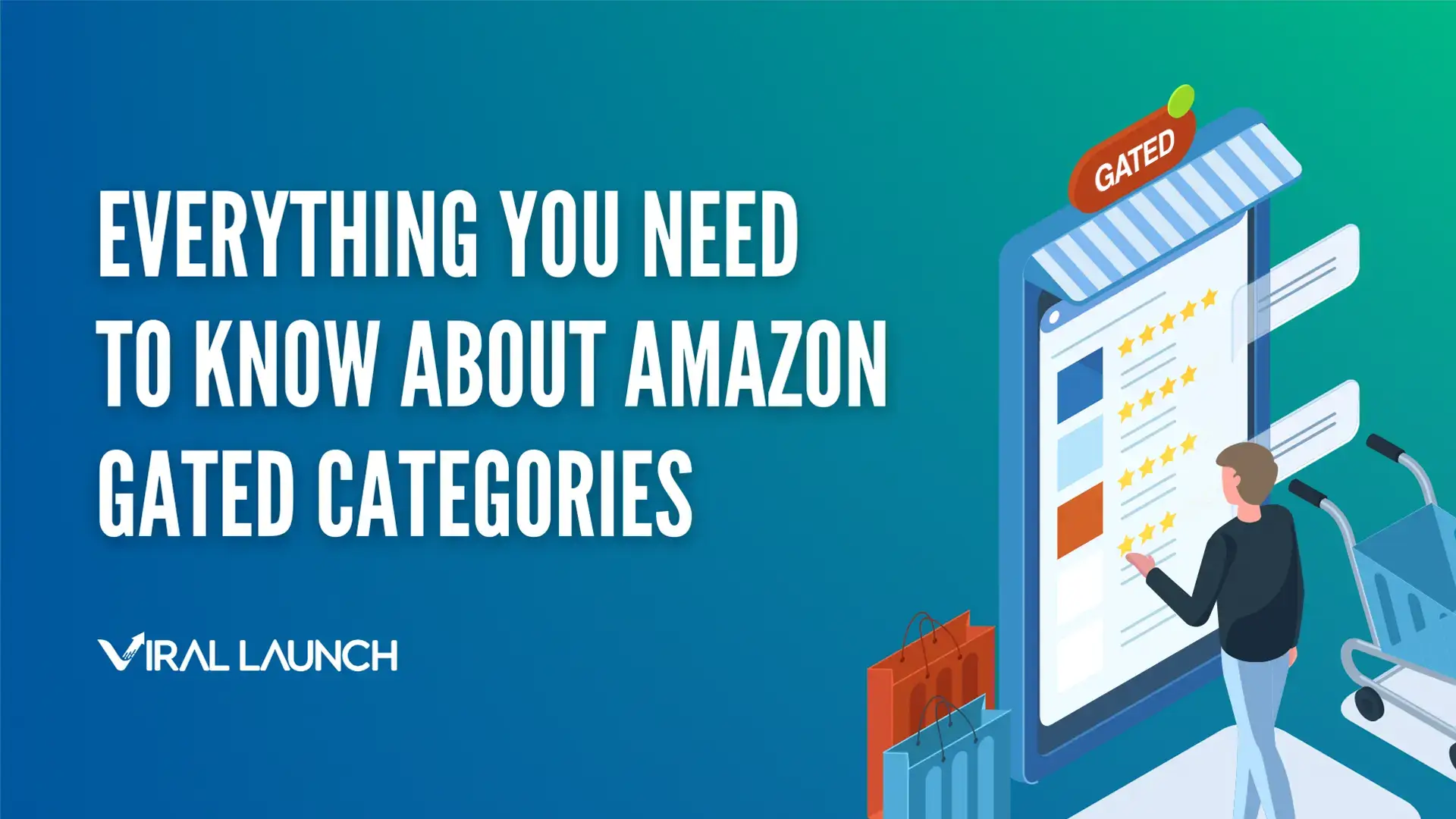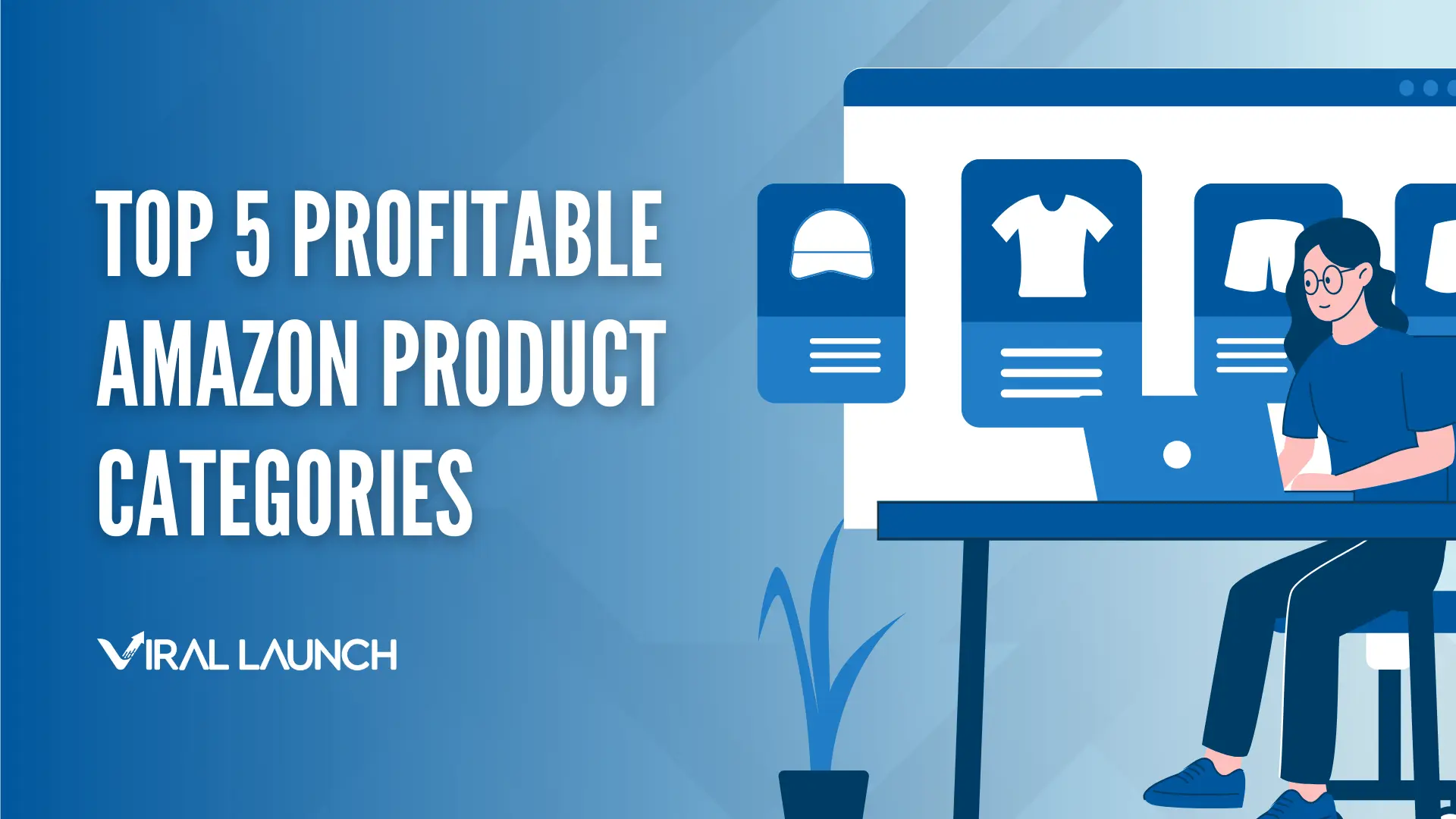When looking to private label a product on Amazon, it’s extremely evident that the markets are flooded. Now more than ever, it can be an incredibly difficult feat to drive sales for a new product with no reviews and no sales history. That said, there is still a (literal) wealth of opportunity in the Amazon space for savvy sellers who package a well developed strategy with their product offering.
At Viral Launch, we’ve seen one recurring fundamental reason for a product’s failure on Amazon… lack of strategy. It’s not good enough to source a product, throw up a listing, and wait for the sales, and (perhaps unfortunately) focusing on sourcing a product that’s objectively ‘different’ or ‘better’ than your competition doesn’t matter much when you’re given one image and around 100 characters to draw the attention of shoppers.
Everything on Amazon comes down to strategy, and strategy is the result of thorough research. Sourcing the right product and ensuring that it’s positioned correctly in the market is the key to driving success on Amazon. While we have recently published two lengthy posts which cover how to generate product ideas and how to launch and rank products, due to ever increasing importance, we’ll be taking a deep dive into the foundation of every successful strategy on Amazon: keyword research.
The Strategy Behind a Well Crafted Listing
It’s important to recognize that while many people think of Amazon as more of a digital store, the reality is that Amazon.com is first and foremost a search engine. For this reason, when creating a product listing, it’s important to understand that your written content must serve dual purposes.
The first purpose is to produce an attractive listing. Like an advertisement for your product, you need to ensure that you’re using persuasive language and providing a value proposition to help sell your product. If your content doesn’t make sense, doesn’t read attractively, or doesn’t adequately explain the tangible value of the product, shoppers will inevitably be inclined to choose a different product.
The second purpose of your listing is to appeal to Amazon’s search engine. Because your product is inevitably found through customer search queries, ensuring that you’re understanding the keywords that shoppers are using to find your product (and understanding how to prioritize them in your listing) is critically important for driving success. With this, diversifying your keywords as much as possible helps you to index within the results of more searches, thus widening your listing’s potential visibility.
Ultimately, a well optimized listing (a balance between keyword rich content and sales language) is the cornerstone of a successful product. If you focus too heavily on making a persuasive appeal to your shoppers, there is a good chance that you’ll end up limiting the quantity of searches for which your product will be indexed. On the other hand, if you focus too heavily on overloading your listing with high value keywords, it may show up in more searches but it’s likely that the product’s conversion will be low. Even if you can get your listing in front of people, if it doesn’t read well, or draw people in, you’re not going to be able to maximize your sales perspective.
Great listing content is a fusion between art (sales language) and science (keyword research). The art of this equation is something that comes from understanding your product and the benefits, differentiating factors, and qualities that can persuade buyers. The science comes from market research, data analysis, and in most cases, a quality set of tools to help your pursuit. This article will be addressing the science of keyword research.
Keyword Research
While the purpose of this article is educational and not a sales pitch, and while there are several tool suites that can be utilized to help you conduct research, this article will be referencing the Viral Launch research tools for ease of reference.
While some of this should even be done prior to sourcing a product, when beginning to analyze keyword markets, Keyword Research should be the foundational reference point for building your listing content. To start, you’ll want to search for your product’s primary keyword. This is logically the keyword that you would search if you were looking to buy a product in your market. From there, Keyword Research will populate a list of associated keywords along with key metrics such as search volume, relevancy score, etc.
This list of keywords of populated keywords contains many of the important search terms that you should seek to prioritize in your content. Because Keyword Research is algorithmic, however, you’ll need to review these results to pull out the best keywords to include.
For starters, sort your results by search volume. This should give you the most competitive keywords in your market. These are the terms being searched most heavily by shoppers and have the potential to drive a large volume of sales. That said, they’re also going to be difficult and expensive to rank for, meaning that while it’s important to include these terms in your content, you’re going to want to target some quick-win keywords as well that can help you to drive sales early on.
It’s important to note that you’ll also want to remove any ‘branded’ keywords from consideration. For instance, if you’re selling socks, keywords like ‘Nike socks’ may have high search volume, but since you’re not Nike, these keywords can’t be targeted by your content.
Once you have identified a good selection of high volume keywords, it’s important to now look for keywords with high opportunity. A high opportunity keyword is a keyword that is not included in the content of many/any competing listings. Within Keyword Research, opportunity is scored from 0-1000. Keywords with a 1000 opportunity score means that no listings on page one have this exact phrase keyword included in their content. The lower the score, the more listings include this term.
To identify high opportunity keywords, it’s recommended that you sort by opportunity score, and look for any keyword with an opportunity of 750-1000 with a search volume of at least 1000 searches per month. There are typically plenty of keywords that have high opportunity, but if no one is searching for them, there isn’t much potential to drive sales. Because each section of a listing has a character limit, it’s important to prioritize keywords that have better potential to drive sales (i.e. keywords that have search volume).
Finally, performing a quick review of high priority and high relevancy keywords will help you to catch any other terms that may have been missed. Particularly, priority is determined by assigning a score based on search volume and opportunity, meaning that it will help to show keywords that are easy to rank for while having some degree of customer audience.
It’s also recommended that you repeat this process by searching several high volume keywords within Keyword Research. Though the majority of the keywords should overlap, ensuring that you’re not missing any other valuable keywords can be helpful.
As you collect these keywords, you are able to move them over to your keyword bank, allowing you to create your listing within Listing Builder. You’re also able to copy and/or export your list to a CSV file. It’s highly recommended that you keep an organized record of your targeted keywords for reference for tracking and advertising purposes.
Competitor Intelligence
While using Keyword Research is a great way to understand your market and build a collection of high volume keywords, it’s also important to understand your product market within the context of the competition. By understanding what keywords your competitors are running ads to, driving sales through, prioritizing, and/or ignoring, you can begin to build a strategy around how to position your product within a market.
With Competitor Intelligence, you can review your competition’s keyword data and use their data to your advantage. Through keyword analysis on several market competitors, you can construct keyword lists based on a few different considerations.
Primarily, Competitor Intelligence can show you what keywords are driving sales for your competition. The tool is able to present any listings, organic ranking for each keyword, ad placements, and keyword search volume, allowing you to review and monitor the keywords that correlate to a bulk of your competitor’s sales. Through this, you can start to build a profile of the keywords that drive the most sales for listings in your market and prioritize your listing content accordingly.
Additionally, using Viral Launch’s Reverse ASIN 2.0 technology, Competitor Intelligence will also show relevant keywords for which your competitor is not indexed and/or ranked for. Comparable to opportunity score, if there is little to no search volume for these keywords, they may not be worth prioritizing. However, if your top competitors are missing a few quality keywords in their listing, it may create opportunity for you to drive sales with little competitive resistance. Especially early on in the life of your listing, understanding how to drive easy sales by capitalizing on the missed opportunities of your competition can be a useful tactic to begin building visibility, sales history, and reviews. This data has the power to help you drive sales through opportunities that your competitors don’t even know that they’re missing.
Ultimately, through viewing the keywords that your competitors are using to drive sales, as well as the overlooked keywords which have the potential to drive sales, you can ensure that you’re not missing a single opportunity!
Listing Analyzer
For Existing Product Listings:
If you have an existing product listing that you’re seeking to improve, the best strategy is to start by using Listing Analyzer. By linking your Seller Central account to your Viral Launch account, you’re able to seamlessly pull your product catalog into the Viral Launch interface.
From the Listing Analyzer tab in your Viral Launch dashboard, you can run an analysis on your product. Our software will pull metrics and keyword data from your listing, presenting you with an overview of your product in comparison to the market, along with a listing quality score. Through this tool, your listing’s images, reviews, competitiveness and copy are analyzed and you are also provided with a list of competitive and comparative products.
Additionally (and most importantly within the context of this article), Listing Analyzer will also provide you with an extensive list of keywords which are relevant to your product market. This data is relatively similar to Keyword Research (with regards to the metrics provided), however you are also able to review whether or not the keyword is being utilized in your listing.
From this list, you are able to select keywords that are relevant to your listing and move them into Keyword Manager to monitor, track, and/or incorporate into your listing.
On a final note, it’s important to make sure that you’re putting your best foot forward when it comes to optimizing your listing with the strongest keyword spread possible. That said, if you are working with an older product, particularly if it’s selling relatively well, changing your listing content can create a ‘reshuffling’ of your keywords within Amazon’s system. Because of this, you can sometimes see a short term detriment to ranking and sales as your listing is reincorporated into Amazon’s SEO structure. Therefore, while it can be beneficial in the long term to fully optimize your listing, you may need to weigh this against the potential setbacks to determine if and when to change your content. Ultimately, while this can be a good tactic for working with a new listing, altering your content becomes more complicated as your listing ages.
For a New Product Listing:
If you are beginning your keyword research prior to having an active listing on Amazon, you will want to begin your process by building out your keyword list through the use of Keyword Research and Competitor Intelligence.
Once you have a listing on Amazon, it’s advantageous to run your product listing through Listing Analyzer to further ensure that you’re maximizing your keyword/ranking potential.
While you do need an existing listing in order to run an analysis, it’s worth it to think of Listing Analyzer once your product listing is up on Amazon as a final check to verify listing quality. At this point, you can review the provided keyword data through the tool and make any final adjustments if you notice any missed terms.
Note: If you are running an analysis on a brand new listing, it’s unlikely that you will have a perfect score, as review quantity, revenue generation, etc. in comparison to the market factor in to the assessment. While you want to note these data points as a means of knowing what’s needed to maximize competitiveness for your market, early on, the best use of Listing Analyzer is to verify your keyword list and review competing and complementary products for the purpose of product targeted advertising.
Keyword Manager
Now that your keyword bank is compiled (and hopefully added to your listing), it’s time to start benefiting from your research. Keyword Manager helps you to track your keyword bank and understand how and where you’re driving sales.
Considering it’s almost impossible to go a single day without encountering the immense reach of Amazon, it’s obvious that the largest e-commerce marketplace is also an insanely saturated e-commerce marketplace. While employing thorough keyword research into your listing is a critically important element of success, it is very unlikely that you will magically appear at the top of the search results. Amazon favors products that perform and as a new product, you have to prove that you can get sales in the market in order to gain visibility. Driving sales is not always easy, especially with a new product with no reviews or sales history, but with the proper strategy around marketing and advertising, you can begin to generate sales and improve keyword ranking (thus driving organic visibility).
By utilizing Keyword Manager to track your relevant keywords, you can monitor your progress to better determine which keywords are producing the most growth, and which keywords you’re having more trouble with. You can use this data to develop a strategy to continue building momentum, and you can ensure that you’re not missing a beat by establishing notifications and hourly tracking on your most critical search terms. If your ranking fluctuates, or your ad positioning changes, you’ll be able to respond quickly and efficiently to address the situation.
While Keyword Manager isn’t explicitly a keyword research tool, it’s a great resource for helping you to fully capitalize on your keyword strategy. With the ability to review organic and sponsored positioning, prioritize by opportunity and search volume, and track your movements in your market, Keyword Manager gives you the tools you need to harvest the fruits of your (keyword research) labor.
Conclusion:
As more sellers enter the Amazon marketplace at an accelerating pace, the importance of thorough research and a deep understanding of your product market is crucial for driving success. Robust keyword research is the cornerstone of any successful strategy for launching a product on Amazon. Developing a well prioritized bank of keywords helps you to establish a wide breadth of searches through which you can gain visibility and sales, while also enabling a deeper understanding of how to use PPC and marketing to effectively grow your product.
Ensuring that you have the broadest range of keywords possible, and knowing how all of your keywords interact with the market informs you on how and where to drive sales and ranking. Through adequate keyword research, you can understand where your competition drives sales, which keywords generate the most sales for your market, and which keywords you can most easily gain ranking traction for.
The importance of performing your due diligence when performing keyword research cannot be overstated. Implementation of this process will ensure that you’re well positioned to take on the competition and achieve success with your business.
Additional Resources
- Learn everything you need to know about the 7 types of Amazon keywords to increase sales.
- Check out this complete guide to Amazon Keywords to help optimize your listings.







